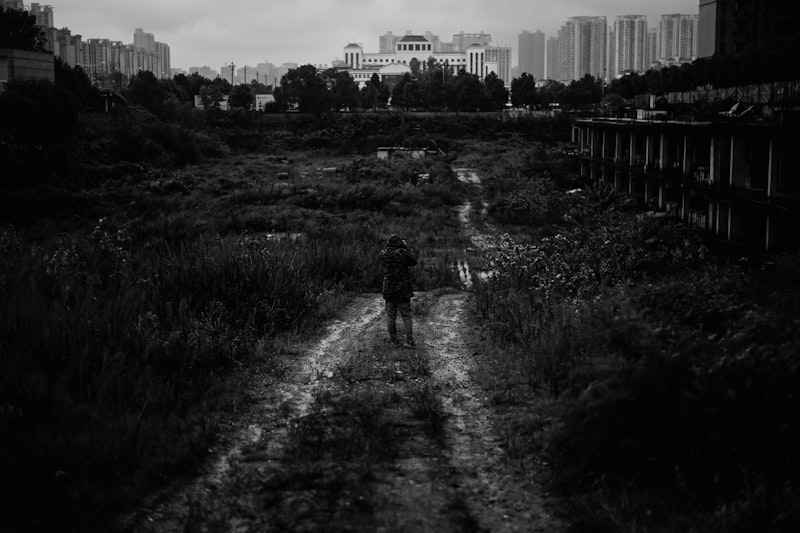- Trypophobia dreams are filled with symbolism, such as holes and clusters of bumps, which can represent feelings of insecurity, vulnerability, and unresolved conflicts.
- The intense fear and disgust experienced in trypophobia dreams may reflect underlying anxieties or aversions in waking life.
- Unresolved conflicts or tensions in relationships can manifest in trypophobia dreams, symbolizing discomfort or anxiety.
- Seek professional help, such as cognitive-behavioral therapy, to address the impact of trypophobia dreams on daily life and overall well-being.
Do you find yourself having unsettling dreams about holes or clusters of bumps? Fear not, you’re not alone. Many individuals experience trypophobia dreams, and understanding their meaning can provide valuable insights into the subconscious mind. Let’s explore the significance and interpretation of trypophobia dreams.
Interpreting Trypophobia Dreams

Dreams can be a fascinating window into our subconscious minds, and trypophobia dreams are no exception. The imagery and emotions experienced in these dreams can provide valuable insight into our fears, anxieties, and unresolved conflicts. In this section, we will explore the symbolism and possible interpretations of trypophobia dreams, shedding light on their meaning and significance.
1. Symbolism in Trypophobia Dreams
Trypophobia dreams are filled with symbolism that can help us understand their deeper meanings. Here are some key symbols to look out for when interpreting trypophobia dreams:
- Holes
Holes in trypophobia dreams often represent emptiness or a lack of substance. They may symbolize feelings of insecurity, vulnerability, or a fear of being exposed or attacked. - Clusters
The clusters of holes or bumps in trypophobia dreams can symbolize a feeling of being overwhelmed or trapped. They may represent unresolved issues or conflicts that need addressing. - Fear and Disgust
The intense fear and disgust experienced in trypophobia dreams may reflect underlying anxieties or aversions in waking life. It could be a sign that there are aspects of your life that you fear or find repulsive. - Anxiety and Panic
Feelings of anxiety and panic in trypophobia dreams may mirror your real-life anxieties. It could indicate that you are feeling overwhelmed or out of control in certain situations. - Unresolved Conflicts
Trypophobia dreams may point towards unresolved conflicts or tensions in your relationships or personal life. The discomfort caused by trypophobic images or objects may symbolize similar feelings of discomfort or anxiety in your waking world.
By paying attention to these symbols in your trypophobia dreams, you can gain a deeper understanding of the messages your subconscious mind is trying to convey.
2. Meaning and Interpretations
Interpreting trypophobia dreams can be a personal journey, as the meaning and significance of these dreams can vary from person to person. However, here are some possible interpretations and explanations for different aspects of trypophobia dreams:
Common Dream Scenarios
- Removal of Holes
If you dream about removing the holes or bumps from your body, it could indicate a desire to eliminate or overcome your fears and anxieties. It may symbolize your efforts to confront and resolve your inner conflicts. - Fearful Reactions
If you experience intense fear or anxiety in your trypophobia dreams, it could signify underlying fears or phobias that need to be addressed. The dream may be urging you to face these fears head-on and find ways to overcome them. - Encountering Triggers
If specific patterns or objects trigger your trypophobia in your dreams, it may represent a need to explore the underlying causes of your fear. Consider the emotions and memories associated with these triggers to gain further insight. - Insecurity and Vulnerability
Dreams featuring clusters of small holes or bumps may symbolize feelings of insecurity or vulnerability in your waking life. It could suggest that you are feeling exposed or lacking in confidence in certain areas. - Magical Transformation
In some trypophobia dreams, the clusters of holes may undergo a magical transformation, turning into something beautiful or positive. This could represent a potential for growth, change, or transformation in your waking life.
Remember that these interpretations are subjective and should be considered alongside your personal experiences and emotions. Exploring the symbolism and meanings of your trypophobia dreams can provide valuable insights into your fears, desires, and unresolved conflicts.
3. Tips for Understanding Trypophobia Dreams
Here are a few tips to help you gain a better understanding of your trypophobia dreams:
- Keep a Dream Journal
Record your trypophobia dreams in a journal as soon as you wake up. Write down all the details you can remember, including the emotions, symbols, and imagery. Over time, patterns may emerge that can provide deeper insights into the meaning of your dreams. - Reflect on Emotions
Pay attention to the emotions you experience in your trypophobia dreams. Are you feeling fear, anxiety, or disgust? Reflect on whether these emotions mirror any current situations or conflicts in your life. - Explore Personal Associations
Consider the personal associations you have with clusters of holes or certain patterns. Do they remind you of anything in your waking life? Explore any memories, experiences, or beliefs that may be relevant to your trypophobia dreams. - Seek Clarity through Meditation and Mindfulness
Practice meditation and mindfulness to quiet your mind and gain clarity about your trypophobia dreams. Stillness and self-reflection can help you uncover deeper meanings and make connections between your dreams and waking life.
By following these tips and delving deeper into the symbolism and emotions of your trypophobia dreams, you can gain a better understanding of their significance in your life.
4. Common Dream Scenarios
While trypophobia dreams can vary greatly from person to person, there are some common scenarios or themes that frequently appear. Here are a few examples:
- Surrounded by Clusters
In this dream scenario, you may find yourself surrounded by clusters of holes or bumps in various forms. This could represent a feeling of being overwhelmed or trapped in your waking life. - Uncomfortable Objects
In this dream scenario, you encounter objects that trigger your trypophobia, such as a honeycomb or coral. The discomfort caused by these objects may symbolize discomfort or unease in certain areas of your life. - Attempting to Avoid Triggers
In this dream scenario, you go to great lengths to avoid triggering your trypophobia. You may try to cover your eyes, avoid certain situations, or steer clear of specific images or patterns. This could represent a desire to avoid confronting your fears or unresolved conflicts. - Fear of Infection or Contamination
In this dream scenario, the clusters of holes or bumps symbolize a fear of infection or contamination. You may feel a sense of dread or anxiety about coming into contact with these objects, reflecting a fear of being harmed or affected by negative influences.
By recognizing these common scenarios in your trypophobia dreams, you can begin to unravel their deeper meanings and gain insight into any fears, anxieties, or unresolved conflicts in your waking life.
Psychological and Emotional Analysis

1. Effects of Past Traumas and Underlying Psychological Issues
Trypophobia dreams can often be influenced by past traumas and underlying psychological issues. These experiences can have a profound impact on an individual’s mental and emotional well-being, causing them to manifest in their dreams. Here are some possible effects of past traumas and underlying psychological issues on Trypophobia dreams:
- Post-Traumatic Stress Disorder (PTSD)
Individuals who have experienced traumatic events in their past may develop symptoms of PTSD, which can include nightmares and intrusive thoughts. For those with Trypophobia, the images of clustered holes or bumps that trigger their fear may appear in their dreams as a re-experiencing of the traumatic event. - Anxiety Disorders
Anxiety disorders, such as generalized anxiety disorder or social anxiety disorder, can heighten the fear and anxiety associated with Trypophobia dreams. Individuals with these disorders may have a heightened sensitivity to stimuli related to their fear, causing them to experience more intense reactions in their dreams. - Obsessive-Compulsive Disorder (OCD)
OCD is a condition characterized by intrusive thoughts and repetitive behaviors. In the case of Trypophobia, individuals with OCD may experience intrusive thoughts about clusters of holes or bumps, leading to heightened anxiety and fear in their dreams. - Low Self-Esteem
Feelings of low self-worth or insecurity can contribute to the intensity of Trypophobia dreams. The clusters of holes or bumps may symbolize perceived flaws or imperfections in the individual’s own identity, leading to feelings of vulnerability and anxiety. - Depression
Depression is a mood disorder that can affect various aspects of an individual’s life, including their dreams. Feelings of sadness, hopelessness, and worthlessness associated with depression can influence the emotional tone of Trypophobia dreams, making them more intense and disturbing.
2. The Role of Unresolved Conflicts in Causing Trypophobia Dreams
Unresolved conflicts, both internal and external, can play a significant role in the manifestation of Trypophobia dreams. These conflicts may stem from past experiences, relationships, or personal issues that have not been resolved or addressed adequately. Here’s how unresolved conflicts can contribute to Trypophobia dreams:
- Past Traumas
When individuals have unresolved traumas in their past, such as physical or emotional abuse, these experiences may resurface in their dreams. Trypophobia dreams may serve as a reminder of the pain and fear associated with the traumatic event, symbolized by the clusters of holes or bumps. - Emotional Conflicts
Unresolved conflicts in relationships can manifest in Trypophobia dreams. The clusters of holes or bumps may symbolize emotional voids or gaps within the relationship, representing underlying tension or unresolved issues. - Internal Conflicts
Unresolved internal conflicts, such as low self-esteem, anxiety, or fear of failure, can also contribute to Trypophobia dreams. The clusters of holes or bumps may represent the perceived gaps or flaws in the individual’s own personality or capabilities, triggering feelings of anxiety and fear.
Identifying and addressing these unresolved conflicts through therapy or personal reflection can help individuals gain insights into their fears and anxieties, ultimately alleviating Trypophobia dreams.
3. Feelings Associated with Trypophobia Dreams
Trypophobia dreams can evoke a range of intense emotions and feelings. The clusters of holes or bumps that trigger the fear response in individuals with Trypophobia can evoke similar reactions in their dreams. Here are some common feelings associated with Trypophobia dreams:
- Fear
Fear is a primary emotion that often dominates Trypophobia dreams. The clusters of holes or bumps may instill a sense of danger or discomfort, causing individuals to experience heightened fear and anxiety in their dreams. - Disgust
Trypophobia often elicits feelings of disgust and revulsion. Seeing clusters of holes or bumps can induce a visceral reaction, leading to a sense of repulsion and unease in Trypophobia dreams. - Anxiety
Anxiety is a prevalent emotion experienced during Trypophobia dreams. The irrational fear of the clusters of holes or bumps may create a sense of unease, apprehension, and restlessness in the dreamer. - Insecurity
The appearance of clusters of holes or bumps in Trypophobia dreams may symbolize vulnerability. This can evoke feelings of insecurity and powerlessness, highlighting underlying issues related to self-esteem or feelings of inadequacy. - Obsession
Trypophobia dreams can sometimes trigger obsessions or fixations on the fear-inducing stimuli. Individuals may find themselves fixated on the clusters of holes or bumps, unable to divert their attention, further intensifying the feelings of fear and anxiety in the dream.
Understanding these emotions and their potential underlying causes can provide individuals with valuable insights into their fears and anxieties. By addressing these emotions through therapy, self-reflection, or other coping mechanisms, individuals can work towards managing and mitigating the impact of Trypophobia dreams on their overall well-being.
Managing and Overcoming Trypophobia Dreams

If you suffer from trypophobia, it’s important to know that you’re not alone. Many individuals experience anxiety and fear when faced with clusters of small holes or bumps. These intense reactions can also carry over into your dreams, making them unsettling and disturbing. However, there are strategies and techniques you can utilize to manage and overcome trypophobia dreams. In this section, we’ll explore some effective ways to deal with these dreams and minimize their impact on your daily life.
1. Techniques for Managing
When it comes to managing trypophobia dreams, there are several techniques that can help you navigate through these unsettling experiences. Here are some strategies you can implement:
- Mindfulness
Practicing mindfulness can be a powerful tool for managing trypophobia dreams. By staying present in the moment and focusing on your breath, you can ground yourself and reduce anxiety. - Visualization
Use the power of visualization to create positive images and associations in your mind. Visualize yourself confronting and overcoming your fear of holes, replacing negative emotions with feelings of empowerment and confidence. - Progressive Muscle Relaxation
This relaxation technique involves tensing and releasing different muscle groups in your body to promote relaxation. By systematically relaxing your muscles, you can reduce overall anxiety and create a sense of calm before bed. - Deep Breathing
Deep breathing exercises can help activate your body’s relaxation response and alleviate anxiety. Practice slow, deep breaths in through your nose, filling up your lungs, and then exhaling slowly through your mouth. - Create a Peaceful Sleep Environment
Your sleep environment plays a significant role in the quality of your dreams. Make sure your bedroom is quiet, dark, and comfortable. Consider using calming scents or soothing background noise to promote relaxation.
2. The Role of Professional Help
If trypophobia dreams are significantly impacting your daily life and overall well-being, it may be beneficial to seek professional help from a mental health therapist. A therapist can provide guidance and support as you navigate through the challenges of managing and overcoming your trypophobia [1] dreams. Some therapeutic approaches that may be effective include:
- Cognitive-Behavioral Therapy (CBT)
CBT helps you identify and challenge negative thought patterns and irrational beliefs associated with your trypophobia dreams. Through therapy sessions, you can learn new coping mechanisms and techniques to manage any anxiety or distress. - Exposure Therapy
Exposure therapy is a type of cognitive-behavioral therapy that involves gradually exposing yourself to the source of your fear in a controlled environment. Under the guidance of a therapist, you can confront your fear of holes and work towards desensitization. - Mindfulness-Based Therapy
Mindfulness-based therapies, such as mindfulness-based stress reduction (MBSR), can help you develop awareness of your thoughts and emotions surrounding trypophobia dreams. These techniques can promote acceptance and non-judgment, reducing the negative impact of the dreams on your overall well-being.
3. Impact on Daily Life if Left Unmanaged
Unchecked trypophobia dreams can have a significant impact on your daily life if left unmanaged. The fear, anxiety, and unsettling imagery associated with these dreams can lead to several consequences:
- Impaired Sleep
Frequent trypophobia dreams can disrupt your sleep, leaving you feeling tired and less able to function during the day. Poor sleep quality can affect your mood, energy levels, and overall productivity. - Avoidance Behaviors
Over time, trypophobia dreams may lead to avoidance behaviors in your waking life. You may start avoiding situations or objects that trigger anxiety and fear, compromising your ability to participate fully in activities or enjoy life to its fullest. - Increased Anxiety
Frequent exposure to trypophobia dreams can heighten anxiety levels, making you more prone to stress and worry in your day-to-day life. This heightened anxiety can negatively impact your relationships, work performance, and overall mental well-being. - Negative Thought Patterns
Regular trypophobia dreams can contribute to a cycle of negative thought patterns and beliefs about yourself. These thoughts may reinforce feelings of vulnerability, insecurity, or helplessness.
By actively managing and addressing trypophobia dreams, you can minimize their impact on your daily life and overall well-being. Seek professional help if needed and remember that you have the power to overcome the challenges posed by these dreams.
Broader Implications

1. Personal Expression and Life Structure
Trypophobia dreams can provide valuable insights into an individual’s personal expression and how they structure their life. Here are some key implications:
- Pushing Boundaries
Dreams featuring trypophobia can indicate a desire to push boundaries and explore new experiences. The act of pushing the meatpieces out of the holes in the dream suggests a willingness to step outside of one’s comfort zone and overcome obstacles. - Body Image and Acceptance
The presence of holes and craters in the dream can reflect issues with body image and self-acceptance. The discomfort and disgust expressed in the dream may be related to insecurities about physical appearance. It is important for individuals to work on cultivating self-acceptance and embracing their bodies. - Resisting Social Norms
The dream character’s reaction to being told that everyone has these holes and that they shouldn’t remove the meat from them implies a resistance to conformity and societal norms. It suggests a desire to question and challenge established beliefs, allowing for personal growth and individuality.
2. The Timing and Outcome of Hard Work and Effort
Trypophobia dreams can offer insights into how the timing and outcome of hard work and effort are perceived. Here are some key implications:
- Delayed Gratification
The presence of large holes filled with meatpieces may symbolize delayed gratification. It suggests that despite putting in effort and hard work, the rewards or desired outcomes may not be immediate. This dream can serve as a reminder to stay persistent and patient. - Overcoming Obstacles
The act of pushing the meatpieces out of the holes signifies a determination to overcome obstacles. This dream may represent the belief that through perseverance and hard work, individuals can overcome challenges and achieve their goals. - Self-empowerment
The dream character’s ability to remove the meatpieces from their body demonstrates a sense of self-empowerment. It suggests that individuals have the capability to take control of their own lives and shape their own destinies through hard work and effort.
3. The Balance between Optimism and Realism
Trypophobia dreams can shed light on the delicate balance between optimism and realism. Here are some key implications:
- Optimistic Outlook
The dream character’s curiosity to ask if having holes filled with meatpieces is normal suggests an optimistic outlook. It reflects a willingness to explore and understand the world, embracing new experiences with openness and positivity. - Realistic Expectations
The discomfort and chills experienced in the dream indicate a recognition of realistic limitations. The dream conveys the idea that it may not be possible to remove the meatpieces entirely, highlighting the importance of accepting certain aspects of life as they are. - Embracing Imperfections
Trypophobia dreams can serve as a reminder to embrace imperfections and find beauty in them. The presence of holes and craters in the dream represents the idea that imperfections are a part of life, and striving for perfection may not always lead to happiness or fulfillment.
4. Nurturing Creativity and Self-Expression
Trypophobia dreams can also provide insight into nurturing creativity and self-expression. Here are some key implications:
- Symbolic Imagery
The vivid and unsettling imagery in trypophobia dreams can be a source of inspiration for creative expression. Artists, writers, and musicians may draw from these dreams to create thought-provoking art or music that evokes intense emotions. - Exploring the Unconscious Mind
The presence of trypophobia imagery in dreams may indicate a connection with deeper aspects of the unconscious mind. Exploring the symbolism in these dreams can lead to greater self-awareness and creative inspiration. - Using Dreams as Inspiration
Keeping a dream journal and documenting trypophobia dreams can provide a rich collection of raw material for creative projects. Artists and writers can use these dreams as a starting point for storytelling, poetry, or visual art.
Conclusion
If you find yourself constantly plagued by trypophobia dreams, know that you are not alone. These dreams may signify deeper emotional tensions or anxiety that may require professional help to resolve. Don’t be afraid to reach out to a therapist or counselor who can provide guidance and support in helping you understand and conquer these fears. Remember, your mental health is just as important as your physical health, and seeking help can be a brave and necessary step towards a happier, healthier you. Take care of yourself, and know that with the right help, you can overcome your trypophobia dreams and live a fulfilling life.










Leave a Reply